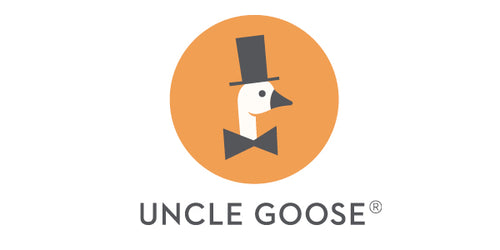
Is there a difference between flashcards and ABC blocks?
Blocks have six sides. Flashcards have two. That’s obvious, so is it worth mentioning?
Apparently so! Some customers seem to be puzzled that Uncle Goose Classic ABC blocks aren’t flashcards! When they see an animal on one side of a block — let’s say an alligator — they don’t understand why there’s not an “A” on the opposite side of the block.
A is for alligator. So why isn't the A on the opposite side of an Uncle Goose block?
Easy answer: it’s because ABC blocks aren’t flashcards. Complex answer: when children learn to read and spell, you don’t want to tax working memory and cognitive load with a "flashcard learning” approach.
Rather, Uncle Goose designs our ABC blocks with age group learning outcomes in mind. Children around the ages of 3-7 might look at an alligator illustration. Then, they might feel inspired to find the first letter of the animal’s name.

It wouldn’t occur to a 5-year-old to hide the alligator image if they’re interested in learning to spell its name! The last thing they’d do is flip the alligator upside down.
Instead, young children are more likely to search through the other blocks in the set to find a letter A. They'd keep the alligator image where they could see it.
So when we put the “A” on a different block, it’s strategic. A child who is learning to spell is more likely to enjoy an improved learning experience with this approach.
Your Uncle Goose doesn’t design our ABC blocks for more advanced “flashcard” learning. We design them for younger children.
When children become a little older, they respond better to “flashcard style” learning. That’s because they have a better grasp of object permanence.
As children age, they might prefer our dinosaur, planet, fossil, constellation, and moon phase blocks. With these sets, you can learn more about each topic on individual blocks.
This approach is a bit more like flashcard learning. You can “flip” each block to learn more about a particular topic.
But still, blocks have more dimensions than cards. With blocks, children get the opportunity to engage more deeply with the material.
They can do this by sorting, stacking, and arranging the blocks. For example, you can look at one block to learn more about the planet Saturn.
Further, you can also arrange the blocks to find out where Saturn is in relation to the other planets. Or sort by number of moons. Or put the planets in alphabetical order. Or arrange them by size. Or anything else you wish!
As you can see, your Uncle Goose doesn’t have anything against flashcard learning. Learning that way can be fun — especially when you’re older.
But when you’re in that magic age of 2-8, flashcard-style learning isn’t going to be nearly as fun or rewarding. And that’s why you’re not likely to find a letter “A” on the opposite side of an Uncle Goose block with alligator on it!

